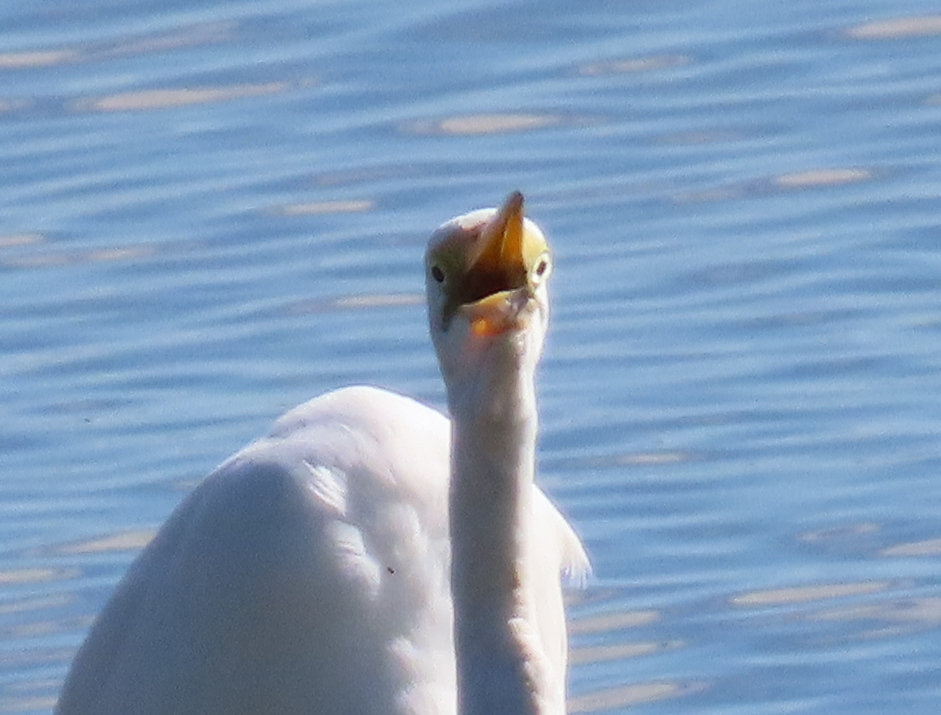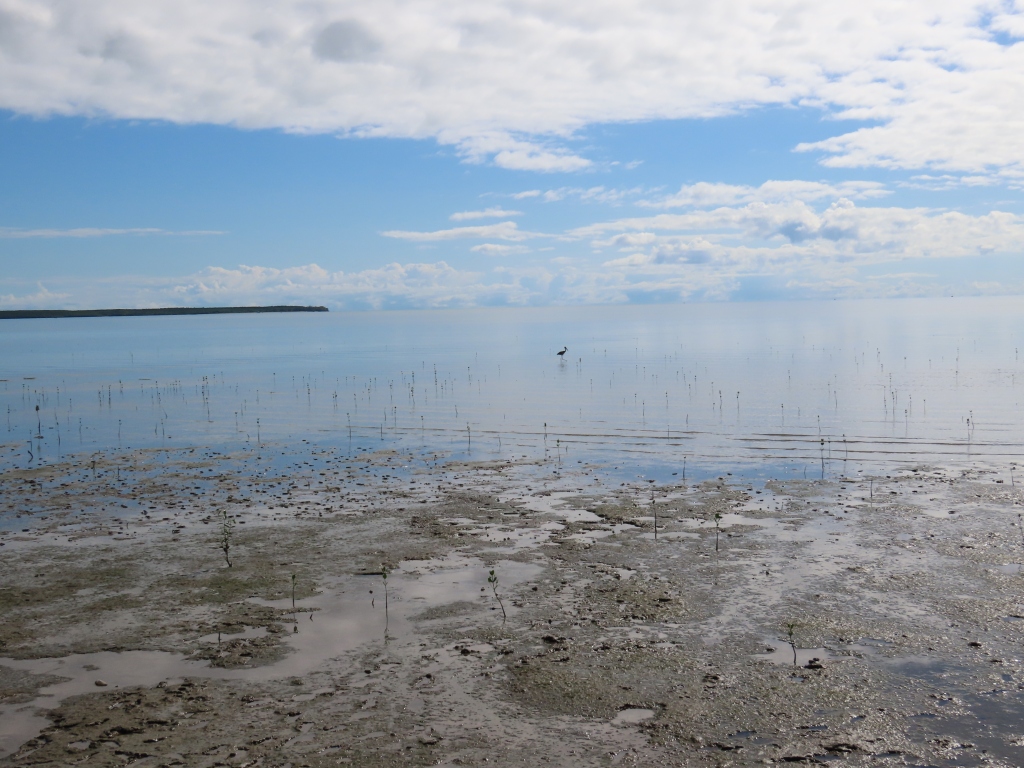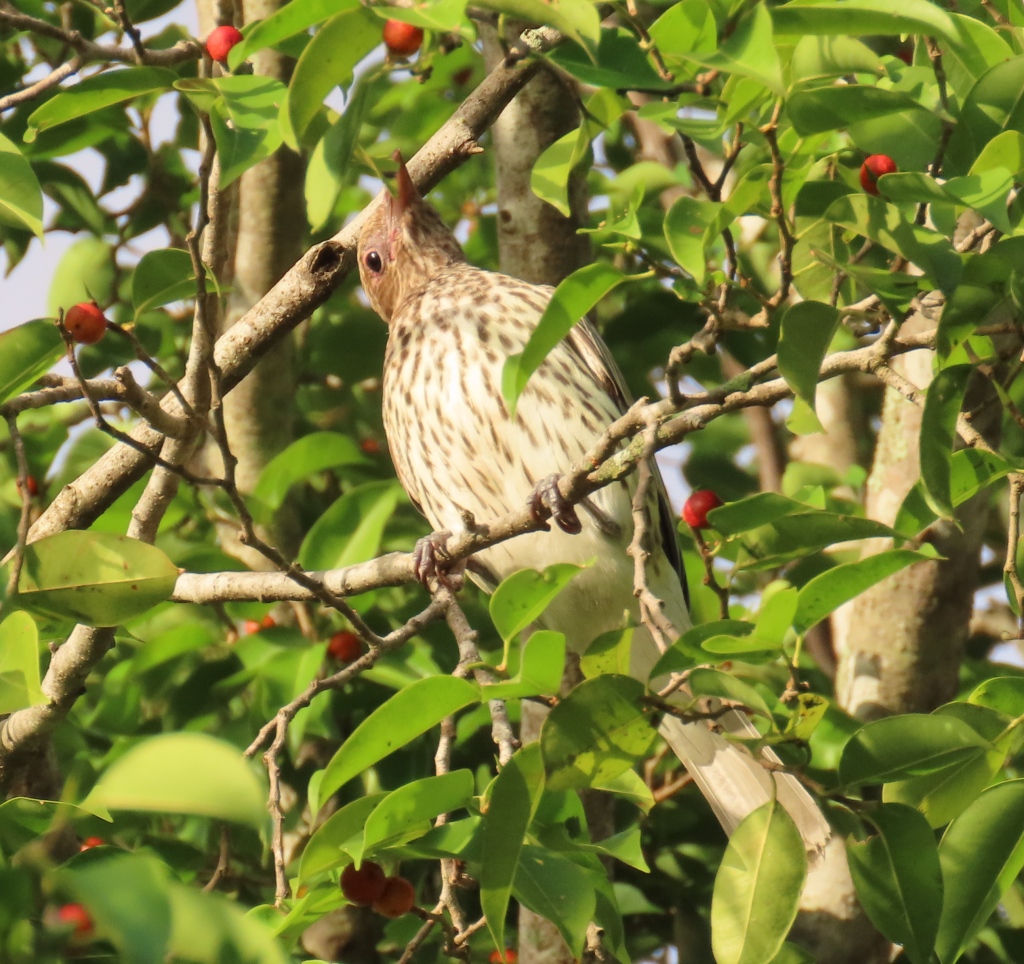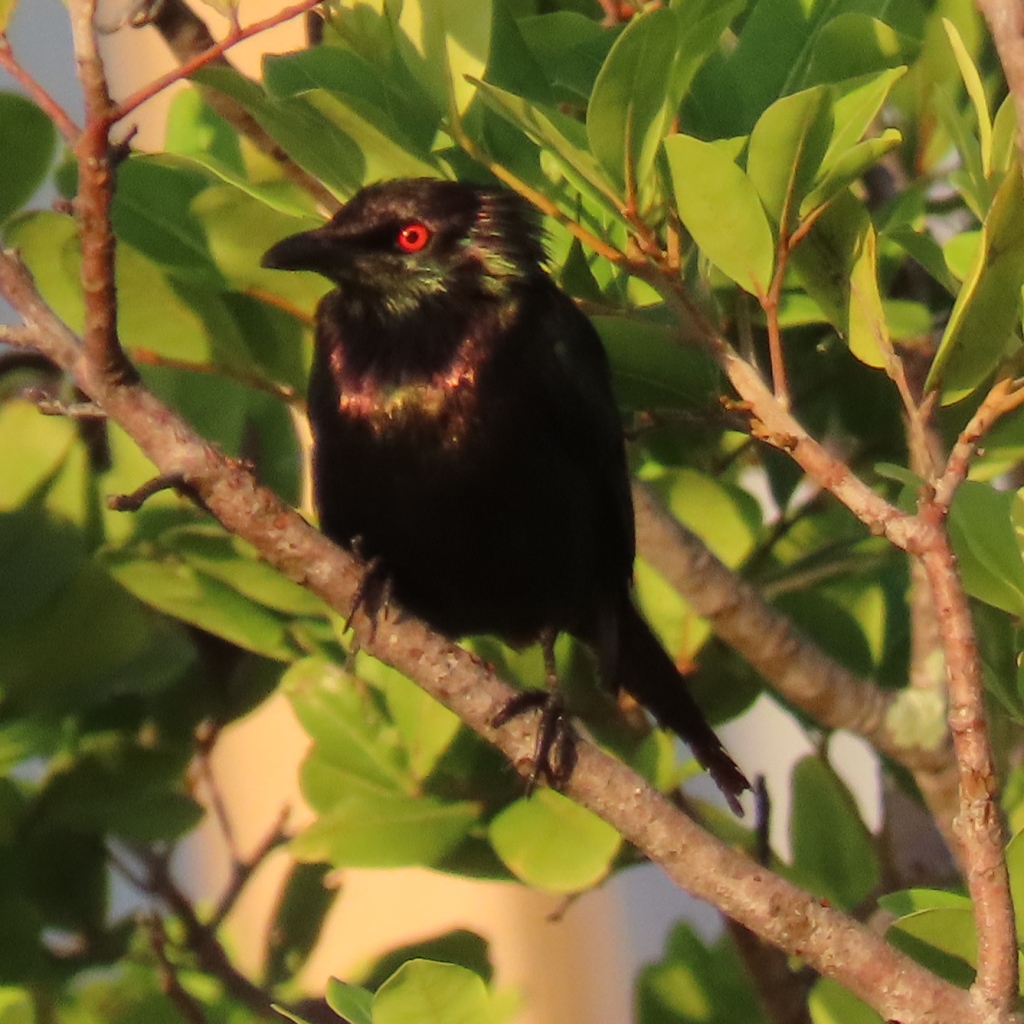Blog Archives
Brown Honeyeater at Maleny
A little Brown Honeyeater was feeding on flowers at the botanical gardens in Maleny, Queensland. Brown Honeyeaters are rather drab little birds, and I didn’t get a good photo of this one. But it’s worth posting as a first sighting:

These little birds are very similar to Fuscous Honeyeaters. I identified this one with the help of the Australian Birds sub-Reddit. This bird doesn’t have the yellow patch on the neck that Fuscous Honeyeaters have. And this bird’s beak is more curved than the Fuscous beak. The next photo shows the curved beak, albeit on the other side of a twig!
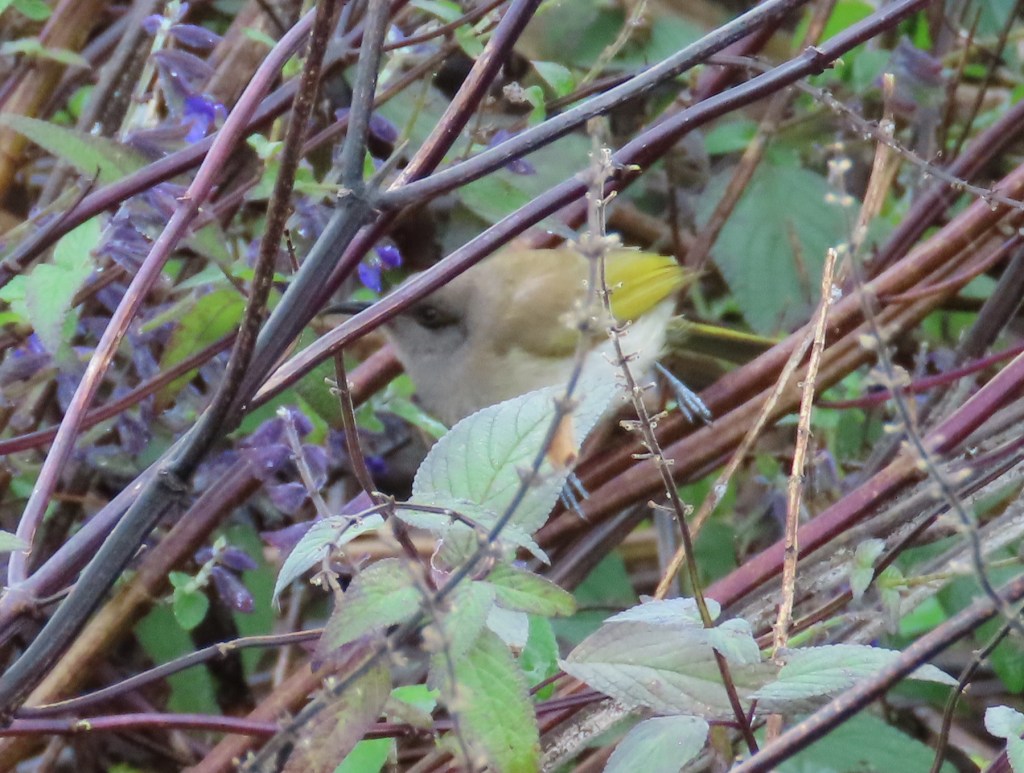
There’s also a hint of yellow at the edge of the eye, as well as that lovely dark eye mask:
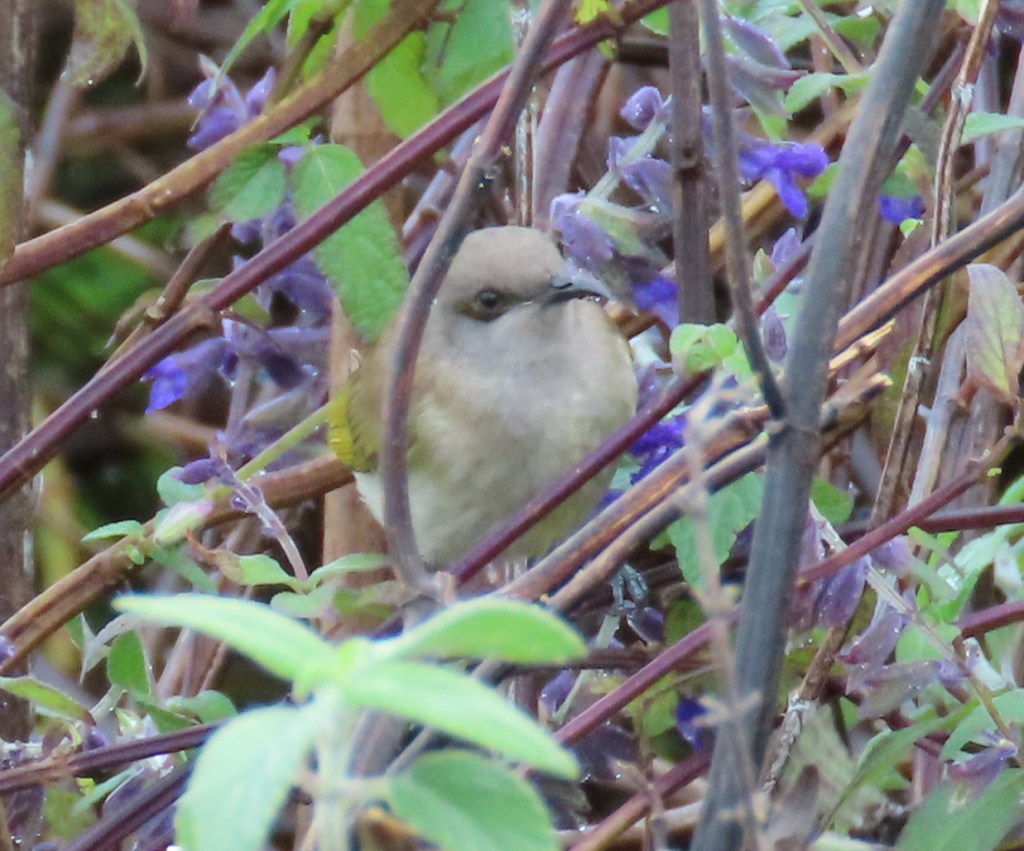
Common name: Brown Honeyeater
Scientific name: Lichmera indistincta
Length: 12-16 cm
Date spotted: 6 July 2024 (winter)
Location: Maleny Botanic Gardens, Queensland: 26°46’54.7″S 152°50’04.0″E
Noisy Friarbird feeding on Grevillea
I recently visited The Gap in Brisbane, Queensland. Every morning, as the sun came up, Noisy Friarbirds visited the flowering Grevilleas outside our window.
For the most part, the Noisy Friarbirds did live up to their name: they were noisy. Funnily enough, though, there’s not much Noisy Friarbird noise in the above video. I did take another video in the same location, of a Pale-headed Rosella this time. And, again funnily enough, in that video you don’t hear the Rosella but you do hear the Noisy Friarbirds (and other birds) in the background.
Noisy Friarbirds aren’t the prettiest of birds. Their body and wings are attractive in a quiet way, but the head looks as if it belongs on a dinosaur! The video and this photo give a nice view of the bump at the top of the bird’s beak, the bare skin and exposed ear, and that red eye:

Common name: Noisy Friarbird
Scientific name: Philemon corniculatus
Approximate length: 30-35 cm
Date spotted: 6 July 2024 (winter)
Location: The Gap, Brisbane, Queensland (approximate map reference)
Pale-headed Rosella, my first
I recently paid a visit to Brisbane and stayed in an Airbnb with a gorgeous garden. Every morning, as the sun came up, birds visited the flowering Grevilleas outside our window. One morning, this beautiful bird was among them:
It’s my first sighting of a Pale-headed Rosella. They’re not found in the Sydney area, but are common further north in NSW and Queensland. I love the soft colours and gentle manner of this bird.
Common name: Pale-headed Rosella
Scientific name: Platycercus adscitus
Approximate length: 28-32 cm
Date spotted: 6 July 2024 (winter)
Location: The Gap, Brisbane, Queensland (approximate map reference)
Straw-necked Ibis
This is another of my bird sightings from a recent trip to Far North Queensland: A Straw-necked Ibis. It was patrolling a large area of cut grass:

The name “straw-necked” comes from the bunch of thin, straw-like feathers at the base of the bird’s neck.
Down in Sydney, the Australian White Ibis (dubbed the bin chicken by locals) is a common sight. But I haven’t seen a Straw-necked Ibis before. According to my bird book, they’re roughly the same size and weight. However, this particular bird seemed heavier and stronger than the ibises I’ve seen up to now.
Common name: Straw-necked Ibis
Scientific name: Threskiornis spinicollis
Approximate length: 60-70 cm
Date spotted: 17 May 2022 (dry season)
Location: Port Douglas, Far North Queensland, Australia: 16°30’42.2″S 145°27’44.2″E
Magpie Goose with chick
In May I visited Port Douglas in Far North Queensland. Strolling along a quiet road was this Magpie Goose and its chick:

These are large birds, at around 80 cm long with a wingspan of 1.5 metres in an adult. Even the chick is a large bird. Magpie Geese are easy to recognise, because of the weird knob on the top of their heads. I see that the baby doesn’t have a head knob yet.

Magpie Geese are found only in Australia and New Guinea. Evidently they’re not “true geese”. Their family branched off earlier than other ducks and geese, and so they’re considered to be a more ancient lineage. They do look a little prehistoric! Their feet are only partially webbed, they have strong claws, and they don’t moult all their flight feathers at the same time. As a result, they can fly all through their moulting.
Common name: Magpie Goose
Scientific name: Anseranas semipalmata
Approximate length: 75-90 cm
Date spotted: 17 May 2022 (dry season)
Location: Port Douglas, Far North Queensland, Australia: 16°30’42.2″S 145°27’44.2″E
Birds from a boat on the Daintree River
In May this year I was lucky enough to visit Far North Queensland. While there, I took an early morning boat trip on the Daintree River (map). The tour, run by Ian “Sauce” Worcester, was called the Daintree River Wild Watch. Highly recommended!
The river is gorgeous in the early morning chill:
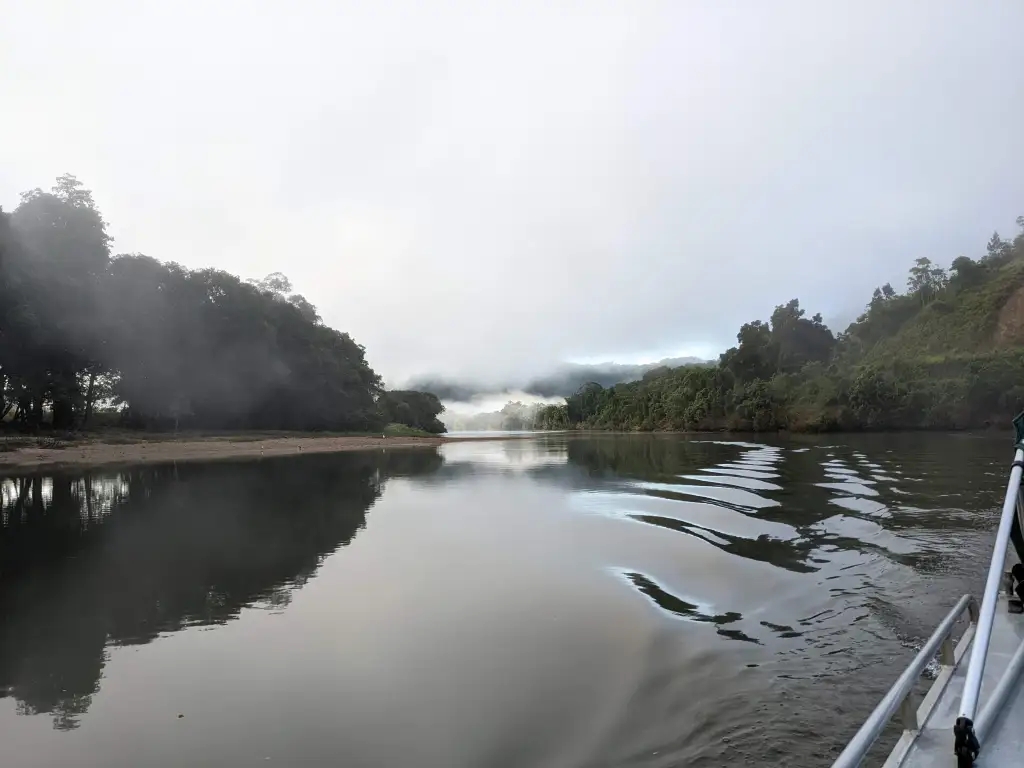
We saw a number of kingfishers on the banks of the river. This one is a Sacred Kingfisher:
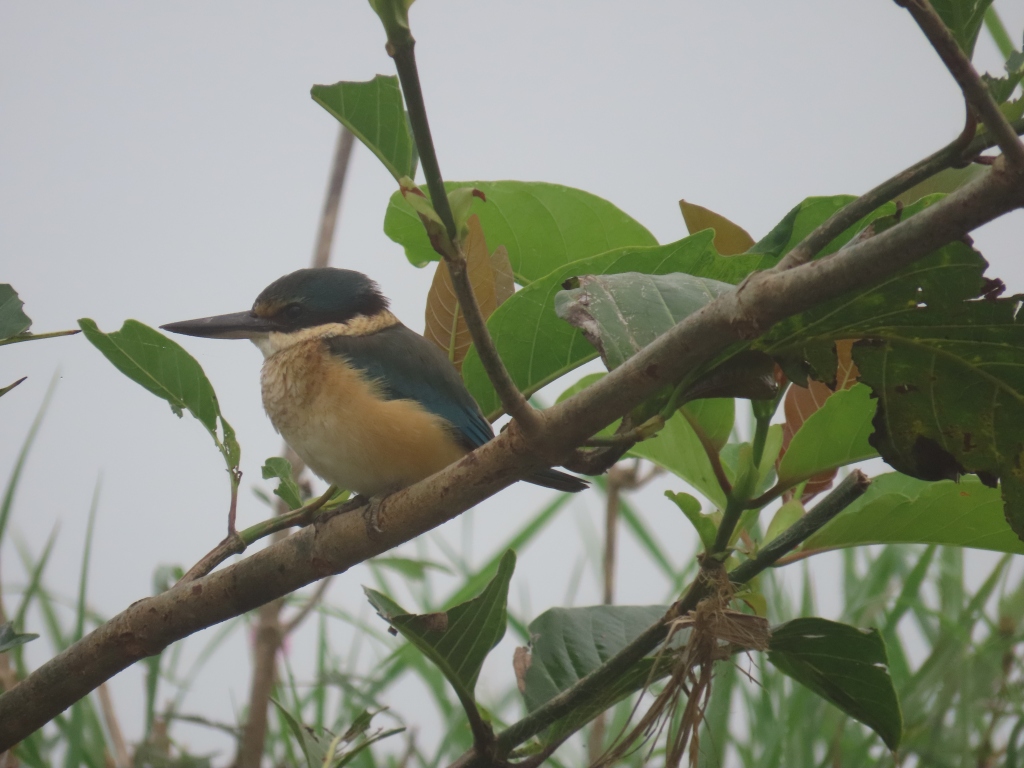
Another Sacred Kingfisher:

A Spectacled Monarch hid in the undergrowth of the mangrove forest. Our boat followed it quietly until it came into easy view:
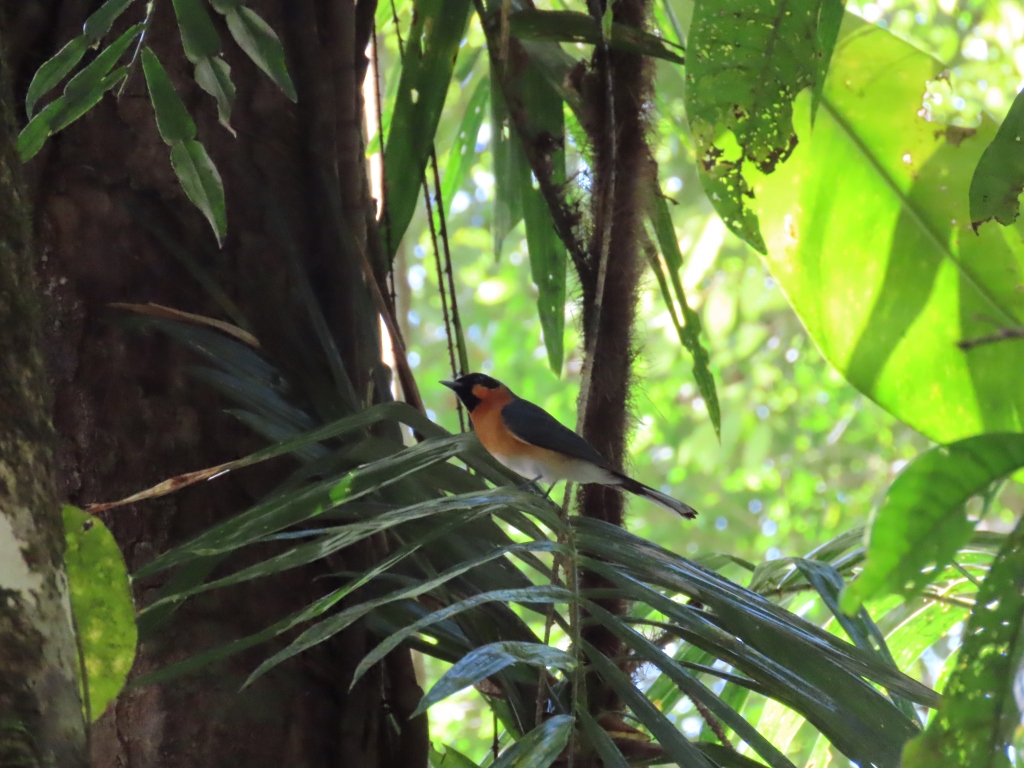
As the sun came up, a Rainbow Bee-eater landed on a high-up tree branch and fluffed out its feathers to take advantage of the warmth:
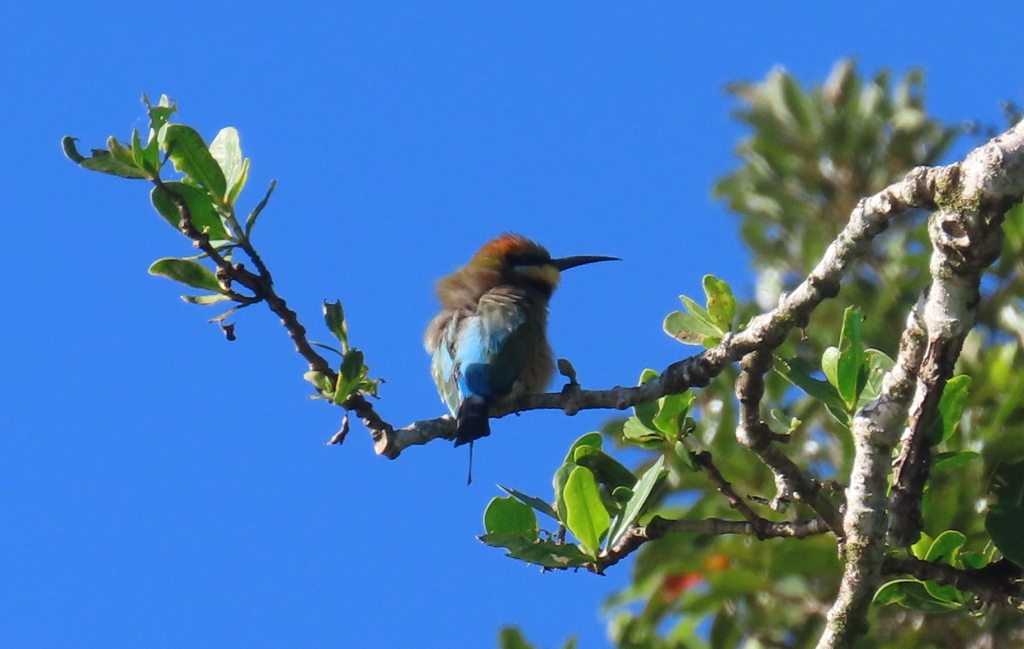
Here’s another view of the Rainbow Bee-eater:
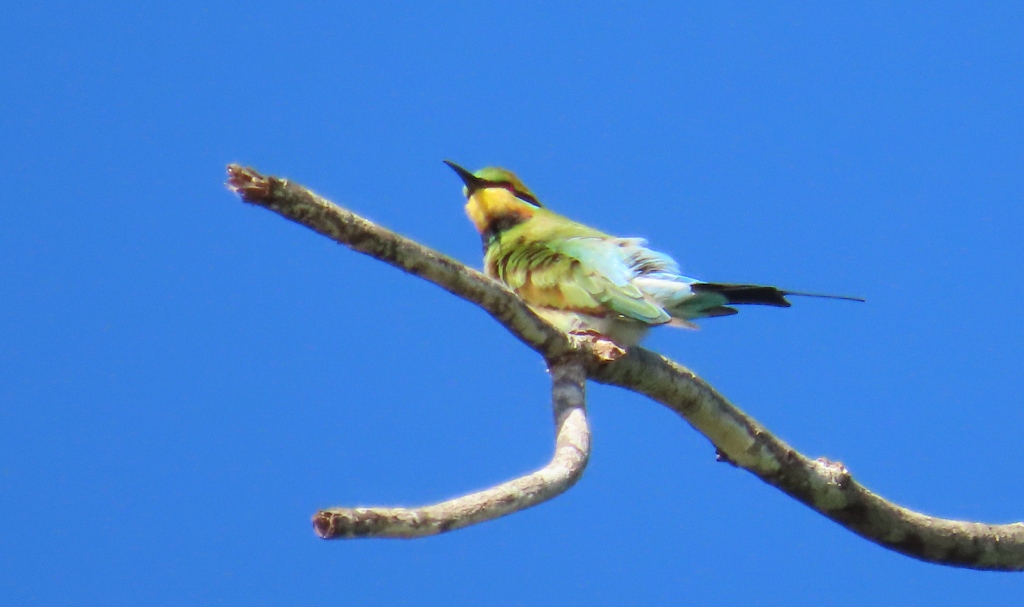
The river banks were at times covered in mangrove forests or fig trees. High above our heads, flowers bloomed:
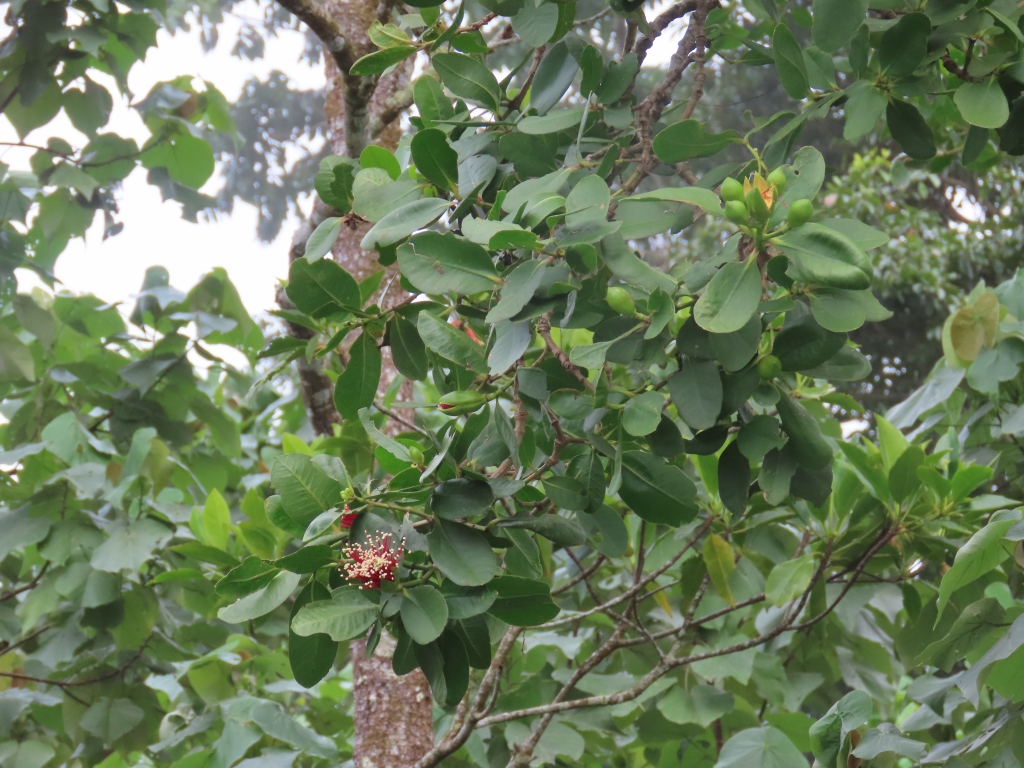
Waterbirds included these colourful Radjah Shelducks, sometimes called Burdekin ducks:

Another non-descript-looking duck caused some excitement, as our tour guide thought it might be a whistling duck but I can’t identify it. If anyone can say what it is, let me know:
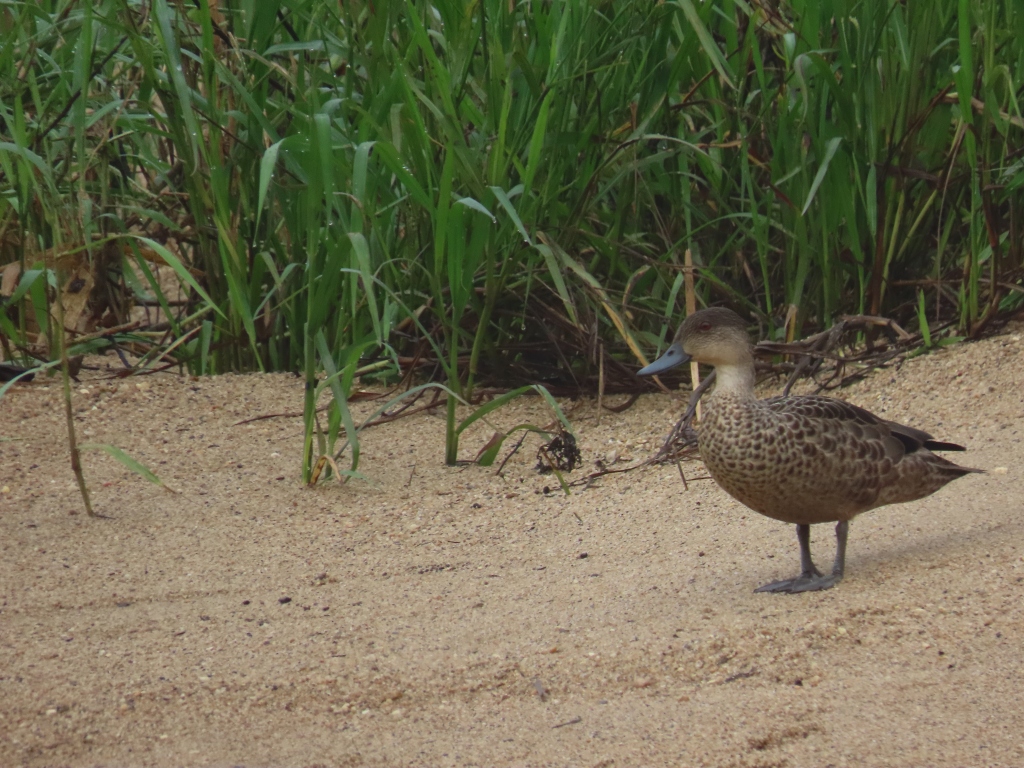
We saw a Darter roosting close to a Little Pied Cormorant. In this photo, the cormorant is behind the darter looking towards the right. The darter is in front, with its back to us, looking towards the left:
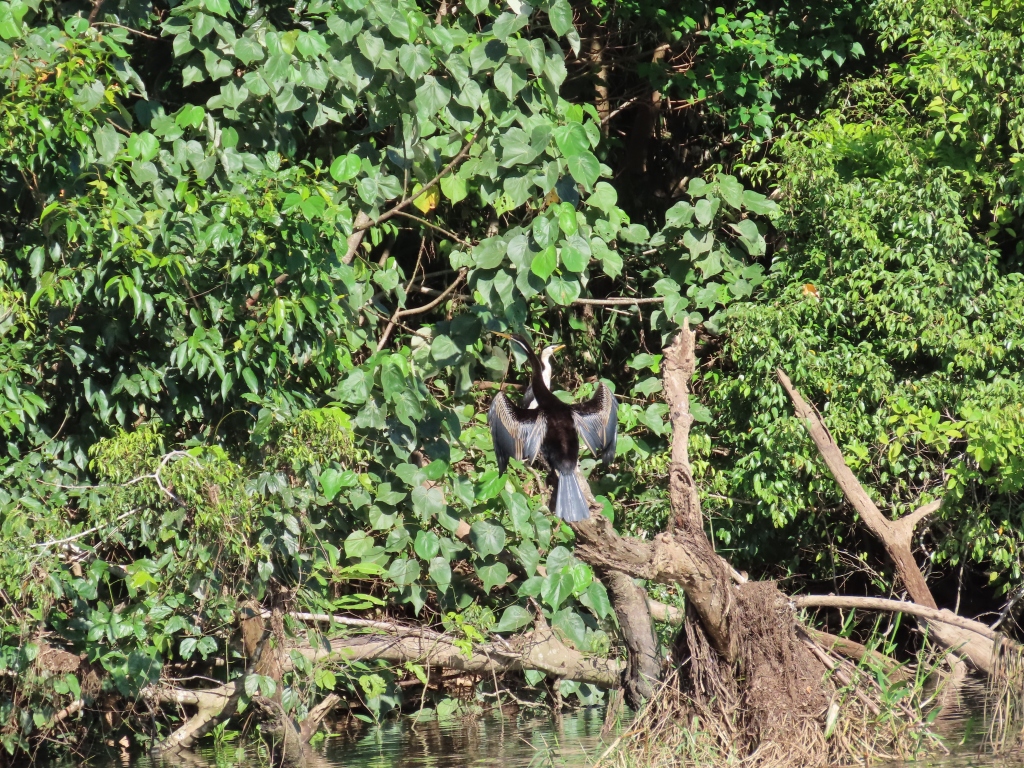
Three Little Pied Cormorants kept us company on the water. You can see the dense forest that covered much of the river bank:

An egret kept pace for a while too:
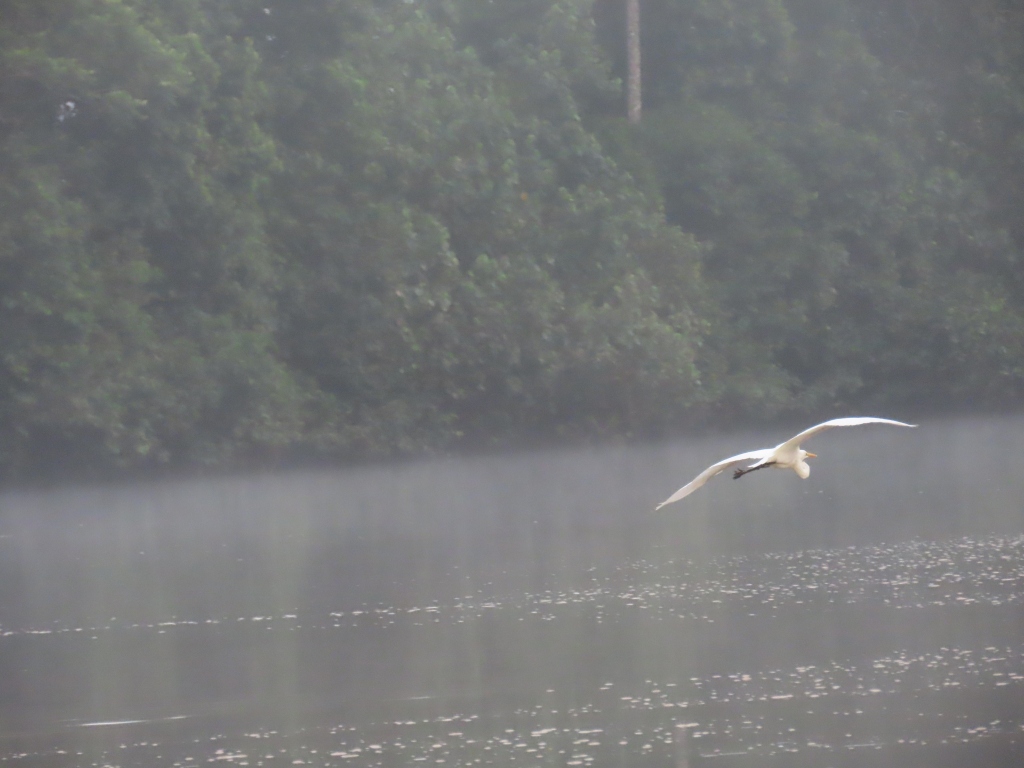
Atmospheric pic of preening pelican in Cairns
I love the colours of this early-morning shot. The bird is an Australian Pelican, chilling out at the edge of the Coral Sea.
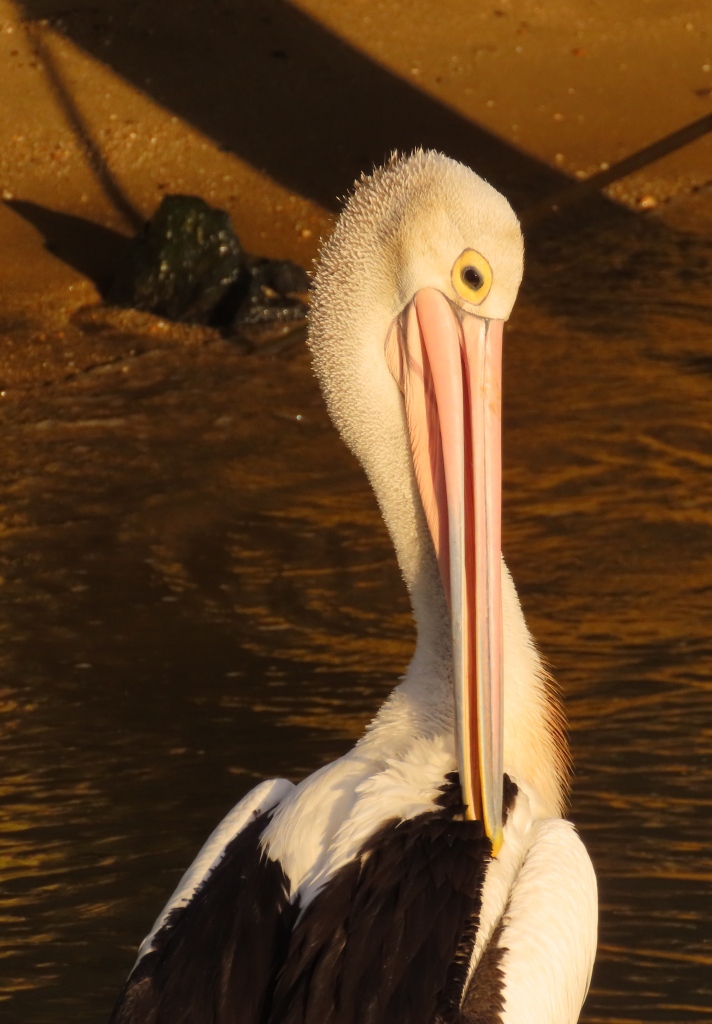
Common name: Australian Pelican
Scientific name: Pelecanus conspicillatus
Approximate length: 170 cm
Approximate wingspan: 2.5 m
Date spotted: 15 May 2022 (dry season)
Location: Cairns Esplanade, Far North Queensland, Australia: 16°55’05.0″S 145°46’33.3″E
The call of the Orange-footed Scrubfowl
In my previous post, I mentioned that many of the birds up in Far North Queensland have different calls from those down in my usual haunts near Sydney. Here’s another example: The Orange-footed Scrubfowl:
This sighting is another first for me. These birds are found in the far north of Australia, on the coastal rainforest edges of the continent. The noise and the way the bird moves remind me of the Velociraptors in Jurassic Park!
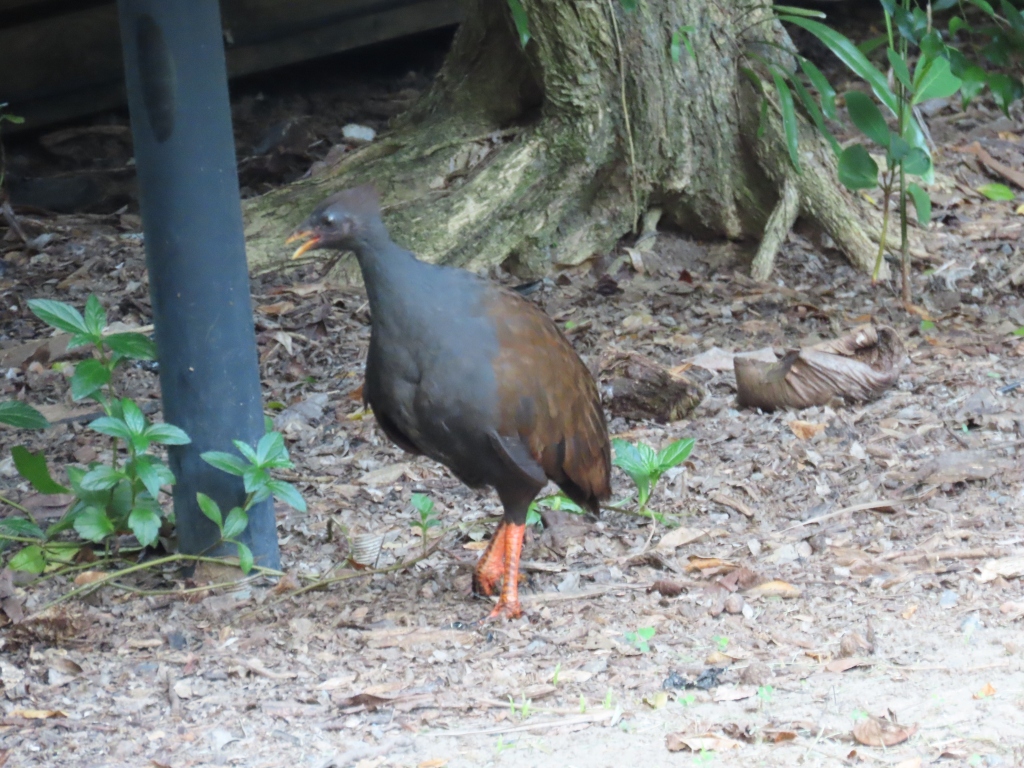
Common name: Orange-footed Scrubfowl
Scientific name: Megapodius reinwardt
Approximate length: 40-50 cm
Date spotted: 17 May 2022 (dry season)
Location: Port Douglas, Far North Queensland, Australia: 16°30’42.2″S 145°27’44.2″E
Black Butcherbird in Far North Queensland
A few days ago, I was visiting Port Douglas in Far North Queensland. Many of the birds up there have quite different calls from those further south. This Black Butcherbird is an example:
As you can see, the lighting was difficult. I did manage to get a couple of clearer still shots of the bird:
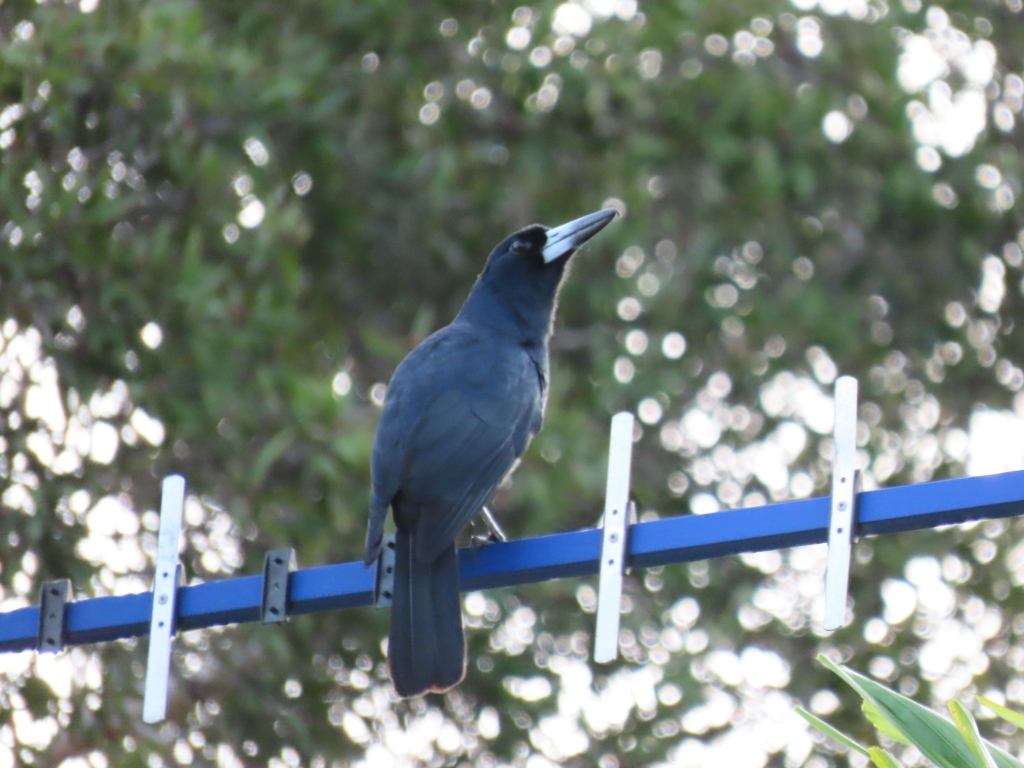
Black Butcherbirds are, as the name implies, entirely black. In Australia, they’re found only in the far north of the continent. Down near Sydney, where I’m based, I’ve only ever seen the Grey Butcherbird, which has a lot of white and grey as well as black plumage. According to my bird book, some Black Butcherbirds (the rulescens race) can be brownish as juveniles.
This is my first sighting of a Black Butcherbird! Here’s another picture of the same bird in full song:

Common name: Black Butcherbird
Scientific name: Cracticus quoyi
Approximate length: 38-44 cm
Date spotted: 17 May 2022 (autumn)
Location: Port Douglas, Far North Queensland, Australia: 16°30’42.2″S 145°27’44.2″E




